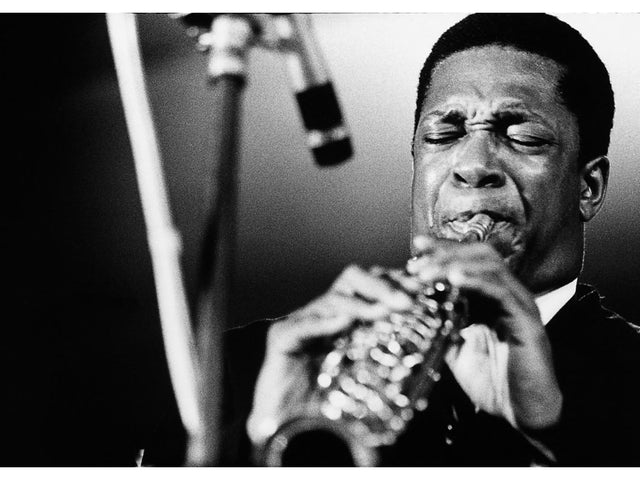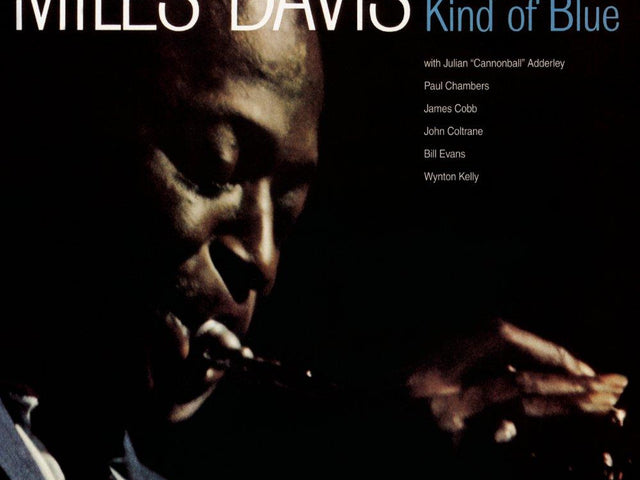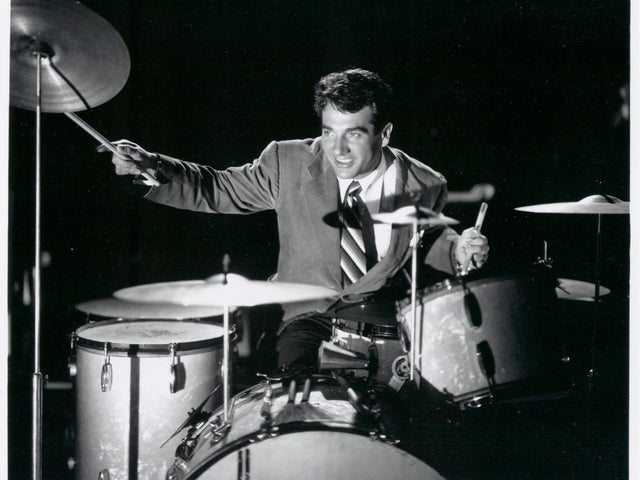新色情製作人從來沒有注定要持久存在,但他們恰恰做到了。這個樂隊是由卡爾·紐曼在他短暫成功的樂隊 Zumpano 的餘燼中創建的,新色情製作人則是由紐曼從其他加拿大獨立搖滾樂隊拼湊而成。他的冠上的最亮眼的寶石是丹·比賈(Dan Bejar),他已因其以 Destroyer 身份所創作的深刻歌曲而受到讚揚;還有妮可·凱斯(Neko Case),她開始因其渾厚的嗓音和成熟的歌曲而受到關注。他們的第一張專輯,即 2000 年的 Mass Romantic,並不是以樂隊能夠繼續作為一個功能性實體的期望來發行的,但自那以來每隔幾年他們就會回來一次,從未滿足於僅僅重現他們的成功,並贏得了獨立音樂中最強的音樂集體之一的地位。
這些年來,事情見證了演變。比賈的 Destroyer 已經多次重塑自我,成為一種公認的獨特藝術家,其作品中包含足夠的個人標記,可以成為一個 飲酒遊戲的基礎。凱斯同樣也成為了一種獨立音樂界的明星,樂於在專輯中以主唱身份出現,並發行了自己的一系列令人驚艷的作品。即使是紐曼,他也作為一位獨立藝人獲得了自己的名聲,儘管他自己發行的唱片聽起來基本上就像是沒有朋友相助的 New Pornos 專輯。
這週將迎來第七張新色情製作人專輯的發行,Whiteout Conditions. 在這 17 年中,樂隊在不大幅改變其身份的情況下不斷演變,凱瑟琳·卡爾德(Kathryn Calder)在樂隊中期的專輯中擔任第四位主唱,而比賈在這張最新的錄音中缺席。這提供了一個回顧這支樂隊歷史的機會,並挑選出他們共同和分開時所分享的最佳作品。

Zumpano: Goin’ Through Changes (1996)
在太平洋西北部仍然受到格朗奇音樂突如其來的影響之際,Sub Pop Records 知道他們必須尋找下一個方向。簽下像溫哥華的 Zumpano 這樣的樂隊代表著這個唱片公司最終所專注的方向,帶著不怕失真的吉他及重度依賴流行旋律的輕柔大眾音樂風格。Zumpano 以樂隊的鼓手和共同創始人 Jason Zumpano 命名,前面有年輕的 Carl Newman,並只發行了兩張專輯便無聲無息地解散。這兩張專輯中的第二張,1996 年的 Goin’ Through Changes 是這對組合中較強的一張,並記錄著新色情者將成為的化石記錄。“Broca 的方式”最能展示 Newman 在構建令人滿意的高潮方面的潛力,搭配其響亮的合唱與 Brian Wilson 式的和聲。在專輯的結尾曲“Some Sun”中,Newman 展現了他可以在沒有太多裝飾的情況下演唱一首歌曲,他的聲音向一個還不太習慣如此真誠的觀眾傳遞著冷靜的自信。這張專輯的製作價值在現代耳中可能會讓人聯想到新色情者的音樂演示,但在 Mass Romantic 在四年後推出這支樂隊之前,Newman 的創作已經達到水平。

The New Pornographers: Mass Romantic (2000)
作為首張專輯,鮮有能像 Mass Romantic 一樣完全呈現樂隊的作品。這無疑是因為該組合的血統,裡面穿插著已經獲得中等成功的搖滾老將,他們熟悉錄音室的操作。雖然有很多過去音樂家的類比,但與 Cheap Trick 和 The Beach Boys 的比較最為真實,這個團體將專輯的好評轉化為成功巡演樂隊的地位,甚至贏得了該專輯的 Juno 獎。他們利用最強成員的優勢(Case 以她的風格演繹了專輯中的一對大型潛力單曲,包括全力以赴的主題曲和“Letter From an Occupant”;Bejar 則毫不費力地將他的流行音樂感覺融入這個組合中,帶來了備受喜愛的“Jackie”)使專輯擁有了超級樂隊的光環。這種“超級樂隊”的概念在其歷史上伴隨著樂隊成長,經年的演變使他們配得上這個標籤。由於這張專輯耗費了三年的時間,Mass Romantic 的合作感在三位主唱之間變得更為明顯,與未來的新色情者專輯相比,“To Wild Homes”仍然是他們歷史上唯一由三人共享主唱任務的作品。

Neko Case: Blacklisted (2002)
直到 Blacklisted,Case 的前幾張個人專輯仍是一種相對標準的替代鄉村音樂,主要因其歌聲和詞曲而受到關注,而不太受到音響風格的區別。但是在 2002 年,Case 開始開拓自己的音樂道路,與她在新色情者的工作截然不同。爵士樂、藍調、搖滾和流行音樂都在 Case 的範疇內,所有這些都以她的自信歌聲為基礎,這在她的事業中已經十分顯著。在這張專輯中,我們確實看到一位新色情者的客座出現,Kurt Dahle 為專輯封面提供了攝影,同樣值得注意的是 Kelly Hogan 作為伴唱者的出現,兩人形成了在 Case 錄音生涯中持續的工作關係。但 Blacklisted 中最令人難忘的是 Case 在情感深度中的穿梭,毫不畏懼地創作出一張深入黑暗並重新浮現於光明的專輯。“I Wish I Was the Moon Tonight” 成為 Case 後續作品的藍圖,一首穩固的輕柔國歌。

AC Newman: The Slow Wonder (2004)
在 2000 年代初期,AC Newman 將會寫出並發行他與新色情者的四張最佳專輯(我們在此不討論 Electric Version 和被低估的 Challengers,但它們也很出色,您也應該把它們買下來)以及他最強的單曲專輯,首張專輯 The Slow Wonder。這張專輯與他在色情者的和聲部分相當適合,但給了 Newman 更多空間讓他的歌曲呼吸。他舒適地在中速上導航,如“Drink to Me Babe Then”,“Most of Us Prize Fighters”和“Cloud Prayer”,甚至在美妙的“Come Crash”中進入了沉重的反思領域。在此期間,他發行的音樂量讓人懷疑 The Slow Wonder 是否是一種剩餘作品,但以大提琴為主的“Town Halo”及其明亮旋律的“On the Table”卻顯示出這位在其創作高峰期間充滿活力的藝術家。

The New Pornographers: Twin Cinema (2005)
關於新色情者哪張專輯是最好的,幾乎沒有爭論。Twin Cinema,作為這支樂隊的第三張專輯,被高度讚賞,可能是因為它打破了他們在前兩張專輯建立的配方。與其讓 Case 主唱輕快、活潑的單曲,我們發現色情者將 Case 的風格與她的獨立作品更緊密地結合,從而創造出突出曲目“ The Bones of an Idol”和“These Are the Fables”。Bejar 讓 Jackie 在“Jackie Dressed in Cobras”中回歸,甚至將一首舊的 Destroyer 歌曲重新編曲為樂隊的第一首原聲情歌“Streets of Fire”。Calder 在她與樂隊的首張專輯中的出現進一步增強了和聲的深度,現在有了兩位女性主唱。但這張專輯最屬於 Newman 和鼓手 Kurt Dahle。兩人在整張專輯的過程中感情如膠似漆,並在樂隊最偉大的時刻“The Bleeding Heart Show”中達到了另一個層次。這首曲目是 Newman 將幾個音樂想法匯編成一個單一的作品,將相對簡潔的四分半分鐘賦予了史詩般的待遇。隨著它達到巔峰,Dahle 在鼓的填充中毫不保留,Case 在全樂隊和聲中上升以抓住主唱的接力棒,樂隊聽起來比以往任何時候都更為宏大,無疑意識到他們創作了一部傑作。

Destroyer: Destroyer’s Rubies (2006)
Destroyer 的 Rubies 不是 Bejar 的第一張偉大專輯。這個榮譽可能是屬於 2001 年的 Streethawk: A Seduction,雖然也有人會為他的作品追溯到 90 年代。但 Rubies 是有所不同的,彷彿 Bejar 對大構思、複雜性及自己的一小片空間的熱愛最終找到了完美的平衡。以開場曲為例,這九分半鐘的標題曲轉換了速度和音質。這應該會讓聽眾感到害怕,但最終成為了一次容易接觸、值得的體驗,擁有多重巔峰和一系列回報。這張小品展現了專輯的優勢,Bejar 的吉他旋律經常與他的聲音相輔相成,並在胡亂的迷宮中找到巧妙的短語轉折。此外,像“European Oils”、“Painter in Your Pocket”和“3000 Flowers”這樣的曲目也都是 Bejar 以往錄音中最直接的作品,證明這位似乎總是無法記住歌詞、喜歡躺著錄音的人確實是一位可在大衛·鮑伊的陰影下成長的流行歌曲作家。到 2006 年時,Destroyer 已經堅定地確立了它作為真正原創的地位,而 Destroyer’s Rubies 則是讓 Bejar 的音樂在音樂典範中佔有一席之地的專輯。

Neko Case: Fox Confessor Brings the Flood (2006)
Neko Case 最佳的個人專輯。正如她在 Blacklisted 中起步,《Fox Confessor Brings the Flood 繼續朝著 Case 自己所稱的“鄉村黑爵士”的路徑發展。當然,她的聲音實際上無法簡單地濃縮成兩個詞。“Hold On, Hold On” 是比過去所有單曲都更傳統的搖滾樂單曲,而“John Saw That Number”則吸收了福音音樂的影響。但在其中心,這種憂鬱的黑暗貫穿了詞曲創作。“That Teenage Feeling” 利用它來隱藏傳統的懷舊情懷,而專輯中的亮點“Maybe Sparrow” 和 “Margaret vs. Pauline” 則以更直接的講故事方式呈現,稍微帶有一絲陰森的色彩。Case 知道何時抑制自己的聲音,何時放開它,造就了那些令觀眾陶醉的時刻。這不僅在於其抱負值得讚賞,而在於如何實現這種抱負,Case 知道自己的藝術能力和達成了它。

Swan Lake: Beast Moans (2006)
新色情者只是在 2000 年代找到了成功的一系列偉大加拿大小型搖滾樂隊之一。Arcade Fire、Broken Social Scene、Tegan and Sara、Unicorns 和 Death From Above 1979 都以大北方的不同聲音吸引著全球觀眾。而這些樂隊並不是在真空中存在的。新色情者的 John Collins 曾為 Tegan and Sara 進行過製作,而 Dan Bejar 很喜歡與超越新色情者的其他音樂家合作。也許他在這方面最好的作品是一個名為 Swan Lake 的項目,與他、Wolf Parade 的 Spencer Krug 和 Frog Eyes 的 Carey Mercer 共同合作。這三位都是聲名顯赫的作曲家,擁有獨特的聲音,因此聽他們為兩張歌曲合集(2006 年的 Beast Moans 與 2009 年的 Enemy Mines)更換主唱,成為一種幻想,讓粉絲希望其最喜愛的藝術家能在關閉的門後做些有趣的事。雖然他們的首張專輯略顯不夠協調,但 Beast Moans 也展示了兩者之中的最高演出,以 Krug 的“All Fires”為主唱,一首簡潔且惆悵的心碎情歌,仍然被視為他最偉大的時刻之一。

Destroyer: Kaputt (2011)
在2015年的DIY雜誌採訪中,Dan Bejar形容Destroyer,提到“這大致是我的目標:每次都從頭開始。”這也解釋了像Kaputt這樣的作品與他其他音樂作品之間是如何脫節的。奇怪的是,Kaputt 在當時的熱門音樂中,薩克斯風重新獲得了關注(M83 的Hurry Up, We’re Dreaming和 Bon Iver 的Bon Iver, Bon Iver是在同一年推出的),這使其出現了一種 Bejar 顯然並未預料的相關性。因此,更多人聽到了Kaputt,超過他與 Destroyer 之前所有的專輯。他會在 Coachella 演出,並且在超過1000人的場地中擔任主唱。這張專輯在其質量上超越了這一點,因為 Bejar 讓編排減輕了他作為歌手的壓力,創造了他職業生涯中最圓滿的專輯。這是一種對時間和空間的俏皮實驗(參見先前釋出的史詩“Bay of Pigs”)以及一些溫暖、華麗的獨立音樂(例如“Chinatown”與“Downtown”),這些歌曲都成為 Bejar 發表過的最受歡迎的曲目之一。

case/lang/veirs: case/lang/veirs (2016)
就像 Bejar 的 Swan Lake 結合了三位偉大的作曲家一樣,Neko Case 的 case/lang/veirs 項目也匯聚了三位成就斐然的音樂家和歌手,看看合作能帶他們去何方。不過與 Swan Lake 提案不同,case/lang/veirs 更像是一支真正的樂隊,這組合找到了單一的另类乡村音樂焦點,讓他們的聲音能在此安定。與 k.d. lang 合作,這位據說在合作前考慮退出音樂界的資深藝術家,以及 Laura Veirs,一位相對較少知但極受尊敬的民謠歌手,促進了 Case 作為專案的‘粘合劑’的能力,使得整體作品更平靜、專注,並具備引人注目的清晰度。當每個人擔任主唱時,他們珍惜突出表現的機會,但當三位歌手和諧相處時,整張專輯(和樂隊)最為令人難忘,塑造了一種永恆、天使般的美學。不幸的是,這張專輯被認為是一次性的,因為這些藝人的結合確實產生了某種特殊的化學反應。
Philip Cosores is Executive Editor for Consequence of Sound. His writing and photography has been featured at The Orange County Register, The AV Club, Stereogum, Red Bull, Bandcamp, LA Times, LA Weekly, and more. He lives in Los Angeles.




